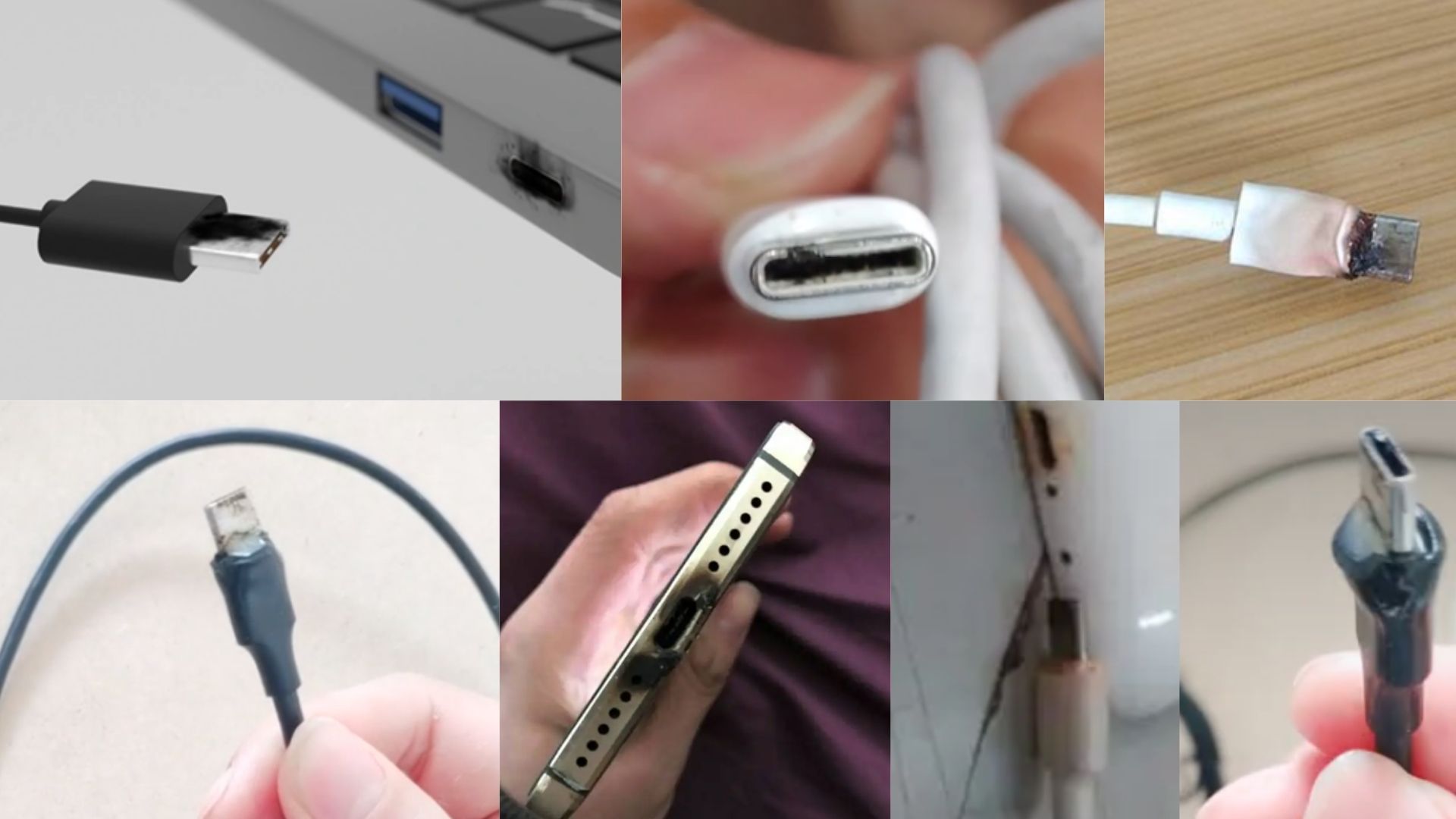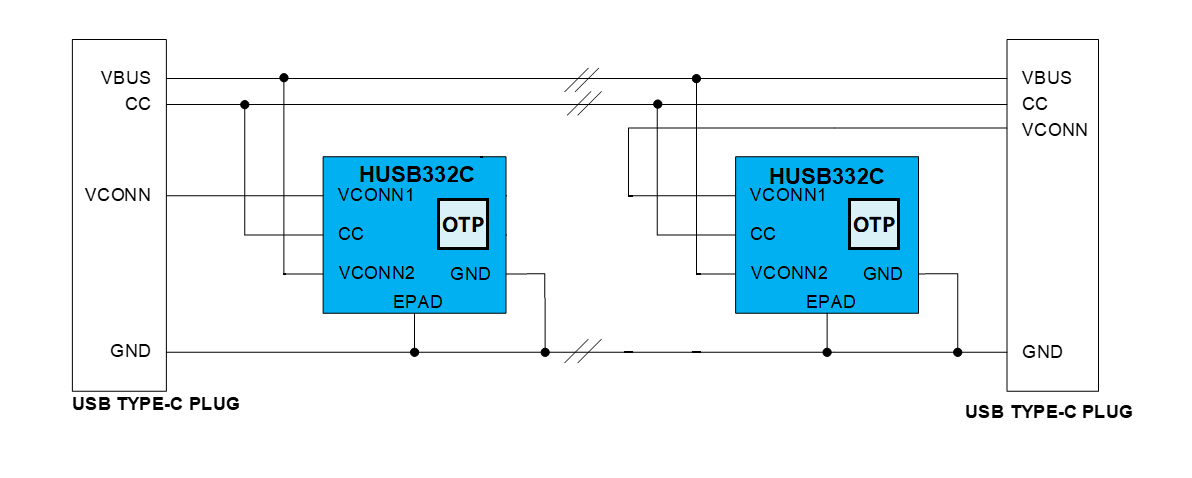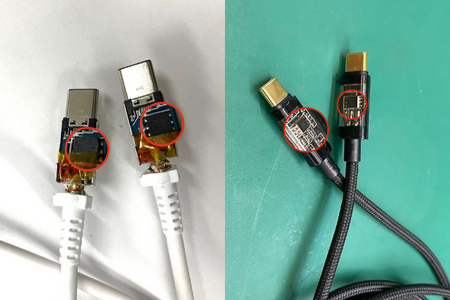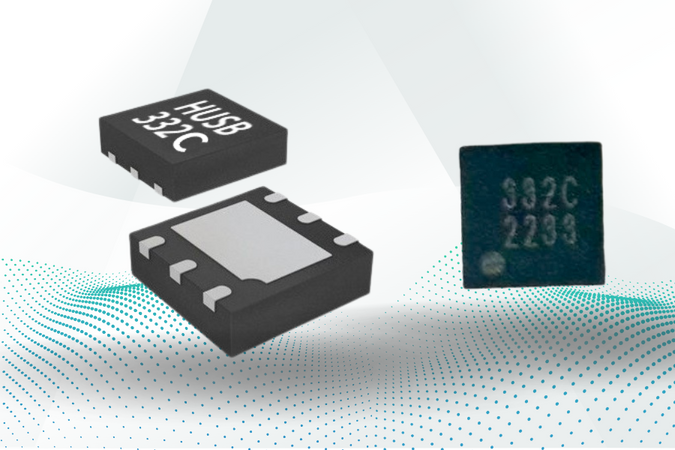Integrated Over Temperature Protection [OTP] of PD3.1 eMarker HUSB332C, helping 240W fast charging
8 29, 2022
Last year, USB Implementers Forum (USB-IF) launched a new PD3.1, which supporting higher power specifications, up to 48V5A 240W. This means that the power adapter, cable, and electronic device are facing a comprehensive upgrade. For the cable, it is facing the test of ultra-high safety performance requirements.
| Safety of Charging Cables
The new PD3.1 still adopts USB-C port, which has a pin pitch of 0.5 mm, quite a bit more compact than the 2.5 mm in USB-A. In this case, USB-C port is more vulnerable to contaminants such as dust and liquid. When contaminants enter the confined space of the USB-C port, a micro-short may form at the USB-C port at Vbus and GND.

The burned black USB-C port
In addition, multiple plugging and unplugging may also cause mechanical failure of the USB-C interface itself. These failure have the potential to cripple computer communications ports, cause severe damage to electronic device, and even threaten harm to users through electrical shock or cause a fire.

The device being charged caught fire
| USB-C Cable Over Temperature Protection Solution with eMarker HUSB332C
The new USB eMarker HUSB332C from Hynetek is PD3.1 compliant and supports up to 240W charging power, while integrating OTP, an over-temperature protection function using Hynetek's patented technology, to ensure excellent performance and effective protection of USB-C cables. HUSB332C comes with temperature detection with a pre-set protection temperature value. When the USB-C interface overheats and the temperature is transmitted to the HUSB332C, it will detect this temperature change and once the temperature exceeds the protection temperature value, it will send a reset signal to the USB PD power supply to cut off the Vbus power to achieve the protection function. When the temperature drops below the protection temperature value, the power supply is restored and so on.
HUSB332C over-temperature experiment waveform

Reference design of "One Cable with Two eMarker"
The reference design of "One Cable with Two eMarker" by HUSB332C can meet the cable's over-temperature protection requirements ,and support 240W fast charging needs. [Note: " One Cable with Two eMarker " means that an eMarker is embedded in the USB-C connector at each end of the USB-C cable.]
| Analysis of the market situation of " One Cable with Two eMarker”

Examples of "One Cable with Two eMarker"
With the introduction of PD3.1, USB4Gen3, Thunderbolt 4 and other protocols, as shown above, the " One Cable with Two eMarker " cables which supports for high-power current transmission, ultra-high-speed data transmission, video signal transmission, is frequently seen in the market. Among them, the original assembly cable in Samsung's new Galaxy S22 series 45W travel charger adpoted the"One Cable with Two eMarker" reference design. The USB-C ports on both ends of the cable are equipped with a HUSB332A, an eMarker from Hynetek.
The HUSB332A's high performance and reliability has been proven by many well-known brands and the market, while the newly launched HUSB332C has enhanced over-temperature protection and supports the latest PD3.1 protocol. the HUSB332C package can be pin-to-pin replaced with part of the HUSB332A, allowing for quick cable upgrades without redesign.
| Comparison of 4 Over-Temperature Protection Solutions for Cables

Comparing the 4 over-temperature protection solutions for cables on the market, we can find that the over-temperature protection solution by using eMarker has the absolute advantage of small size and high cost performance. eMarker is required by the USB-IF to meet the charging requirements of 3A and above, so when eMarker integrates the over-temperature protection (OTP) function, there is no need to design additional. The cable can be protected without the need for additional OTP circuitry. This greatly reduces the number of peripheral devices and lowers costs.
Product Features of the HUSB332C

l USB Type-C 2.1 and USB PD 3.1 Compliant
l High Integration
l Integrated Over-temperature Protection
l Different Package Options:
– DFN2×2-6L
– WLCSP-6B
– Support 2.7 V ~ 5.75 V operation on VCONN1 and VCONN2 Pins
l 0.6 mA Ultra-Low Power Consumption
l 35 V High Voltage Tolerance on CC, VCONN1 and VCONN2 Pins


